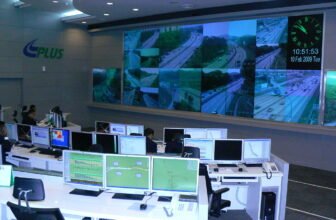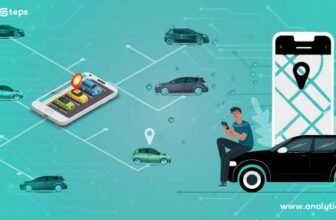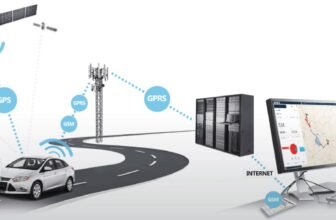
What is a GPS Device for Driving?
A GPS (Global Positioning System) device for driving is an electronic navigation tool that provides real-time location tracking and directions to drivers. It uses satellite signals to determine the precise location of a vehicle and assists with route planning, traffic updates, and various other navigation features. GPS devices for driving can come in different forms, including standalone units, built-in car navigation systems, and smartphone-based navigation apps.
How Does a GPS Device Work?
GPS devices work by communicating with multiple satellites orbiting the Earth. The device receives signals from at least four satellites to calculate its exact location through a process called trilateration. The device then overlays this location data onto a map, providing turn-by-turn directions, estimated time of arrival, and other navigation assistance.
Most modern GPS devices also integrate additional features such as:
- Real-time traffic updates
- Speed limit alerts
- Voice-guided navigation
- Offline map functionality
- Points of interest (POI) suggestions
- Integration with smart assistants and mobile applications
Types of GPS Devices for Driving
1. Standalone GPS Devices
Standalone GPS devices are dedicated navigation units that attach to a vehicle’s dashboard or windshield. These devices come preloaded with maps and do not require an internet connection to function. Brands like Garmin, TomTom, and Magellan manufacture popular standalone GPS devices.
2. In-Dash GPS Navigation Systems
Many modern vehicles come with built-in GPS navigation systems integrated into the dashboard. These systems provide seamless navigation and are often connected to the car’s infotainment system, allowing access to other vehicle functions like audio controls and climate settings.
3. Smartphone-Based GPS Applications
Apps like Google Maps, Waze, and Apple Maps provide GPS navigation on smartphones. These apps use internet-based data and offer real-time traffic updates, alternate route suggestions, and other features. Smartphone-based GPS navigation is convenient, but it requires an internet connection for real-time data.
4. OBD-II GPS Trackers
OBD-II GPS trackers plug into a vehicle’s onboard diagnostics port and track location, speed, and vehicle performance. These are commonly used for fleet management and vehicle tracking purposes.
How to Use a GPS Device for Driving?
Using a GPS device for driving is straightforward, but it requires proper setup and understanding of its features. Below is a step-by-step guide to using a GPS device effectively.
Step 1: Choosing the Right GPS Device
Before using a GPS device, it’s important to choose the right one based on your needs. Standalone GPS devices are ideal for those who prefer dedicated navigation, while smartphone apps are suitable for casual users who want convenience. Built-in car navigation systems offer a seamless experience but may lack frequent map updates compared to standalone devices.
Step 2: Setting Up the GPS Device
Once you have selected your GPS device, follow these steps to set it up:
- Mount the device properly: Most standalone GPS devices come with a suction cup mount for the windshield or dashboard. Ensure it is securely attached for easy visibility.
- Power the device: Plug the device into the car’s power outlet (cigarette lighter socket or USB port).
- Set up language and preferences: Select your preferred language, units of measurement, and voice guidance settings.
- Update maps and software: Ensure your device has the latest maps and software updates for accurate navigation.
Step 3: Entering a Destination
To navigate using a GPS device, follow these steps:
- Turn on the GPS device
- Enter the destination: Use the touchscreen or voice command feature to input the address or select a point of interest (restaurant, gas station, etc.).
- Choose a route: The GPS will suggest the best routes based on distance and traffic conditions. Some devices offer multiple route options.
- Start navigation: Press “Start” or “Go” to begin the journey.
- Follow the on-screen and voice instructions: The GPS will provide turn-by-turn navigation, including lane guidance and upcoming turns.
Step 4: Using Advanced Features
Most modern GPS devices offer additional features that enhance the driving experience:
- Traffic Updates: Many GPS devices provide real-time traffic updates to help drivers avoid congestion.
- Speed Limit Warnings: Alerts drivers when they exceed the speed limit.
- Offline Maps: Some GPS devices allow users to download maps for use in areas without internet access.
- Points of Interest (POI): Shows nearby restaurants, gas stations, hotels, and attractions.
- Bluetooth Connectivity: Enables hands-free calling when paired with a smartphone.
Step 5: Troubleshooting Common Issues
- Signal Loss: If the GPS device loses signal, ensure it has a clear view of the sky and isn’t obstructed by tall buildings or tunnels.
- Wrong Directions: If the GPS provides incorrect directions, update the maps and check for new software updates.
- Battery Issues: If using a portable GPS device, ensure it is fully charged or connected to a power source.
Where to Buy a GPS Device for Driving?
If you’re looking to purchase a GPS device for driving, several options are available:
1. Online Marketplaces
E-commerce platforms offer a wide selection of GPS devices with customer reviews and competitive pricing. Some popular online stores include:
- Amazon (www.amazon.com)
- eBay (www.ebay.com)
- Walmart (www.walmart.com)
- Best Buy (www.bestbuy.com)
2. Electronics and Automotive Stores
Many retail stores carry GPS devices for vehicles. Some well-known stores include:
- Best Buy (Electronics and GPS devices)
- Walmart (Affordable GPS options)
- Target (Selection of GPS brands)
- AutoZone (Automotive navigation systems)
- Pep Boys (Car accessories and navigation devices)
3. Manufacturer Websites
Buying directly from the manufacturer ensures authenticity and warranty coverage. Some GPS brands include:
- Garmin (www.garmin.com)
- TomTom (www.tomtom.com)
- Magellan (www.magellangps.com)
4. Second-Hand Markets
If you are looking for budget-friendly options, consider purchasing a used GPS device from:
- Facebook Marketplace
- Craigslist
- OfferUp
When purchasing a second-hand GPS device, ensure it is in working condition, has updated maps, and includes necessary accessories like a power cord and mount.
A GPS device for driving is an essential tool for navigation, helping drivers reach their destinations efficiently and safely. With different types of GPS devices available, choosing the right one depends on individual preferences and needs. Using a GPS device is straightforward, and with regular updates and proper usage, it can significantly improve the driving experience.
Whether purchasing a GPS device online, in a retail store, or through a second-hand marketplace, it is essential to research features and read customer reviews to make an informed decision. With the right GPS device, you can enjoy stress-free navigation and smoother travel experiences. image/pexels





